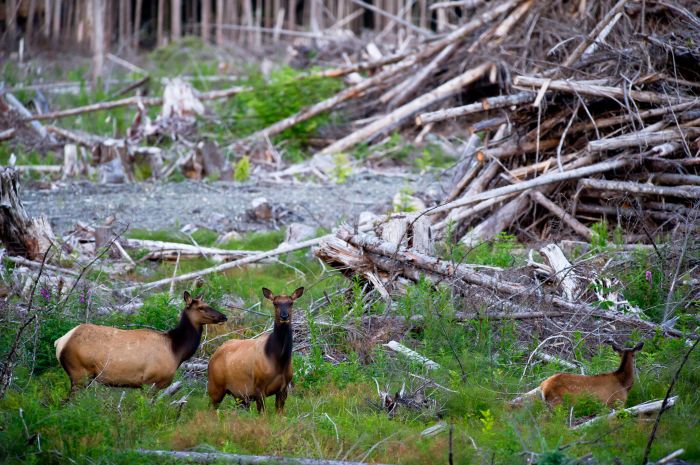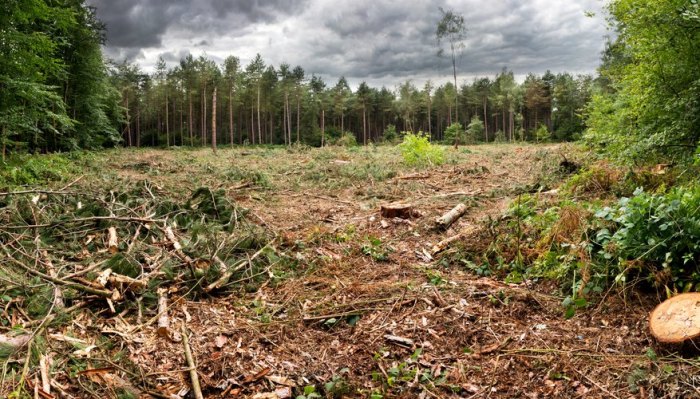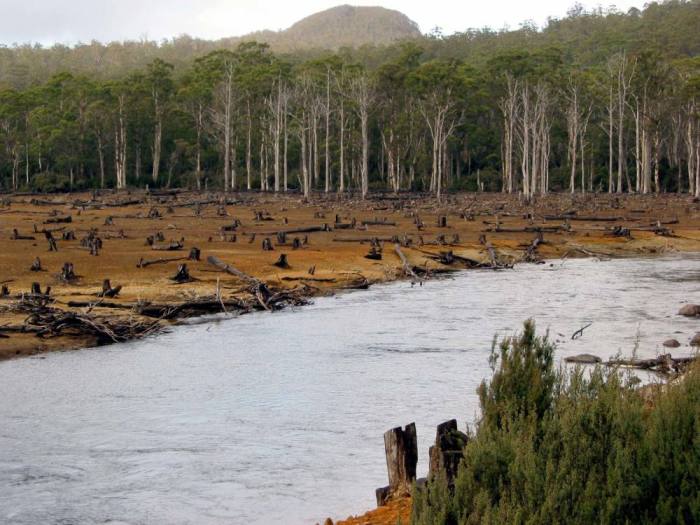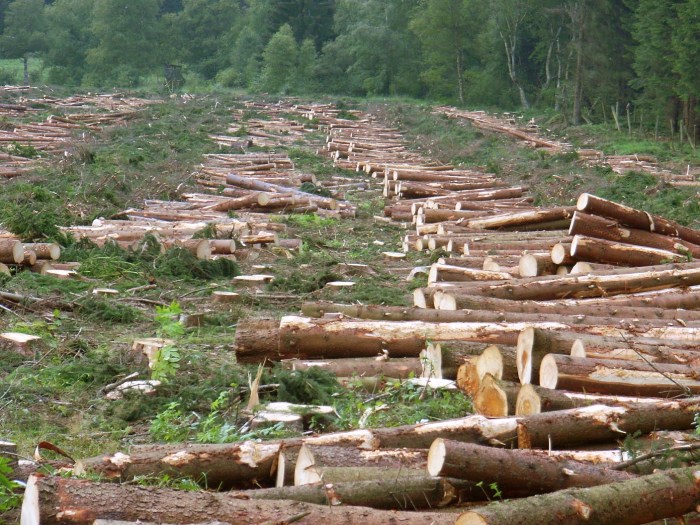Which statement best explains how deforestation affects organisms – Deforestation, the widespread clearing of forests, has profound and far-reaching consequences for the organisms that inhabit these ecosystems. This essay explores the multifaceted impacts of deforestation on organisms, examining the various ways in which this environmental crisis affects their survival, distribution, and well-being.
From habitat loss and fragmentation to changes in food availability, microclimate alterations, soil degradation and erosion, loss of biodiversity, and impacts on ecosystem services, the effects of deforestation are pervasive and deeply concerning. This essay will delve into each of these areas, providing specific examples of how deforestation affects organisms and highlighting the urgent need for conservation efforts.
Deforestation and its Impacts on Organisms

Deforestation, the clearing of forests for various purposes, has become a significant environmental concern. It has far-reaching consequences for organisms and ecosystems, affecting their survival, distribution, and overall well-being. This article explores the detrimental effects of deforestation on organisms, encompassing habitat loss, alterations in food availability, microclimate changes, soil degradation, loss of biodiversity, and impacts on ecosystem services.
Habitat Loss and Fragmentation
Deforestation results in the destruction of critical habitats for countless organisms. As forests are cleared, species lose their homes, breeding grounds, and sources of food and shelter. This habitat loss can lead to population declines, increased vulnerability to predators, and disruption of ecological interactions.Habitat
fragmentation, another consequence of deforestation, occurs when large, continuous habitats are broken up into smaller, isolated patches. This fragmentation can hinder the movement of organisms between habitats, limit their access to resources, and increase their susceptibility to genetic isolation and inbreeding.For
example, the deforestation of the Amazon rainforest has led to the loss of habitat for numerous species, including jaguars, macaws, and sloths. These species have experienced population declines and face challenges in finding suitable mates and establishing new territories.
Changes in Food Availability
Deforestation disrupts food chains and food webs by reducing plant diversity and altering ecosystem structure. The removal of trees and other vegetation eliminates food sources for herbivores, which in turn affects the availability of prey for carnivores. This disruption can lead to population imbalances, competition for resources, and changes in predator-prey relationships.For
instance, the clearing of forests for agricultural purposes has reduced the availability of fruits and insects for frugivores and insectivores. This has led to declines in populations of species such as orangutans, monkeys, and birds that rely on these food sources.
Microclimate Alterations
Deforestation can alter local climate conditions by reducing the amount of shade and vegetation that regulates temperature and humidity. The removal of trees leads to increased sunlight exposure, which can result in higher temperatures and drier conditions. Additionally, deforestation can disrupt wind patterns, leading to changes in precipitation and airflow.These
microclimate alterations can impact the survival and distribution of organisms. For example, species adapted to cooler, humid environments may struggle to survive in deforested areas with increased temperatures and reduced humidity.
Soil Degradation and Erosion
Deforestation can lead to soil degradation and erosion. The removal of vegetation exposes the soil to the elements, making it vulnerable to erosion by wind and water. This can result in the loss of topsoil, which is essential for plant growth and nutrient cycling.
Soil erosion can also lead to sedimentation of waterways, affecting aquatic ecosystems.The degradation of soil can have detrimental effects on organisms that rely on it for food, shelter, and reproduction. For example, the loss of topsoil in deforested areas can reduce the availability of nutrients for plants, which in turn can affect the abundance and diversity of insects and other organisms that depend on these plants.
Loss of Biodiversity, Which statement best explains how deforestation affects organisms
Deforestation contributes to the loss of biodiversity by reducing species richness and genetic diversity. The clearing of forests destroys habitats, eliminates food sources, and disrupts ecological interactions, leading to the decline and extinction of species. Deforestation also fragments habitats, which can limit gene flow between populations and increase the risk of genetic isolation.The
loss of biodiversity has far-reaching consequences for ecosystems and human well-being. It can disrupt ecosystem functioning, reduce resilience to environmental changes, and limit the availability of resources for future generations.
Impacts on Ecosystem Services
Deforestation affects ecosystem services, which are the benefits that humans derive from natural ecosystems. These services include carbon sequestration, water regulation, pollination, and nutrient cycling. Deforestation can reduce the capacity of forests to perform these services, leading to negative consequences for organisms and human populations.For
example, the loss of forests through deforestation can reduce carbon sequestration, contributing to climate change and its associated impacts on ecosystems and human societies. Additionally, deforestation can disrupt water cycles, leading to changes in water availability and quality, which can impact aquatic organisms and human water supplies.
Clarifying Questions: Which Statement Best Explains How Deforestation Affects Organisms
What is the primary cause of deforestation?
The primary cause of deforestation is the conversion of forest land to other uses, such as agriculture, logging, mining, and urbanization.
What are the most severely impacted organisms due to deforestation?
Species that are highly dependent on specific forest habitats or resources, such as endangered species, migratory birds, and large mammals, are often the most severely impacted by deforestation.
How does deforestation affect the global climate?
Deforestation contributes to climate change by reducing the amount of carbon dioxide absorbed by forests, releasing greenhouse gases, and altering local and regional climate patterns.


